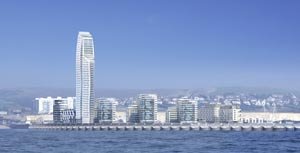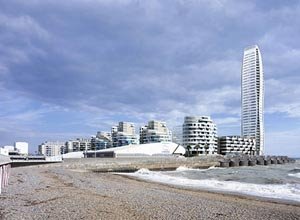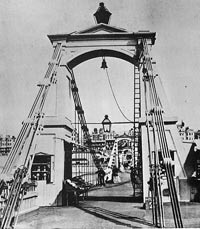A New City Academy for Brighton & Hove

Who would have thought it, but it's true: a new City Academy has recently opened in Hove and it has nothing to do with Tony Blair or his financial backers - at least, not as far as we know. But what's the link, you might ask? Well, the Shadi Danin Clinic in Church Road, Hove, dedicated to all things beautiful, has opened a new training school called The City Academy. Brighton & Hove is a new city and of all the words available in the English language to denote a place of learning, 'academy' is enjoying a revival courtesy of the current prime minister's latest merry-go-round of school reforms..
Shadi Danin looks at health through the lens of beauty and offers a range of treatments from laser hair removal, the Green Peel treatment for sagging face contours, treatments for hair loss, a "holistic approach to hair and beauty", detox and slimming treatments, chiropody, and tattoo removal and skin conditions, which as well as acne, treat skin conditions which are seen as a problem from the point of view of considerations of appearance rather than strictly-speaking physical health.
Now comes The City Academy offering courses in Make Up and Advanced Beauty Therapy. Make Up courses divide into three sub categories: professional, general public, and stage. How's about a workshop in wedding make up? In these days of digital photography (still and video) the happy couple will spend hours on the wedding day stage as the cameras flash and the digicams roll (or whatever it is they do). With a wedding day make up make over they'll be able to smile with confidence the whole day through.
That, I imagine, is the idea.
The four members of staff all seem to have a history of professional involvement in stage and screen - and TV.
The Shadi Danin / The City Academy offer a curious mix of disciplines and give us an insight into the kind of society we live in today.
I say no more.
Go There: http://www.thecityacademy.com



 Today it was the turn of Morris Minor owners to gather together in Madeira Drive. It was quite a homely event compared with some of the other motoring days along Madeira Drive. The Pioneer Motorcycle run on 19th March had many more participants and lots more atmosphere - as well as lots of very interesting veteran motorcycles.
Today it was the turn of Morris Minor owners to gather together in Madeira Drive. It was quite a homely event compared with some of the other motoring days along Madeira Drive. The Pioneer Motorcycle run on 19th March had many more participants and lots more atmosphere - as well as lots of very interesting veteran motorcycles.









